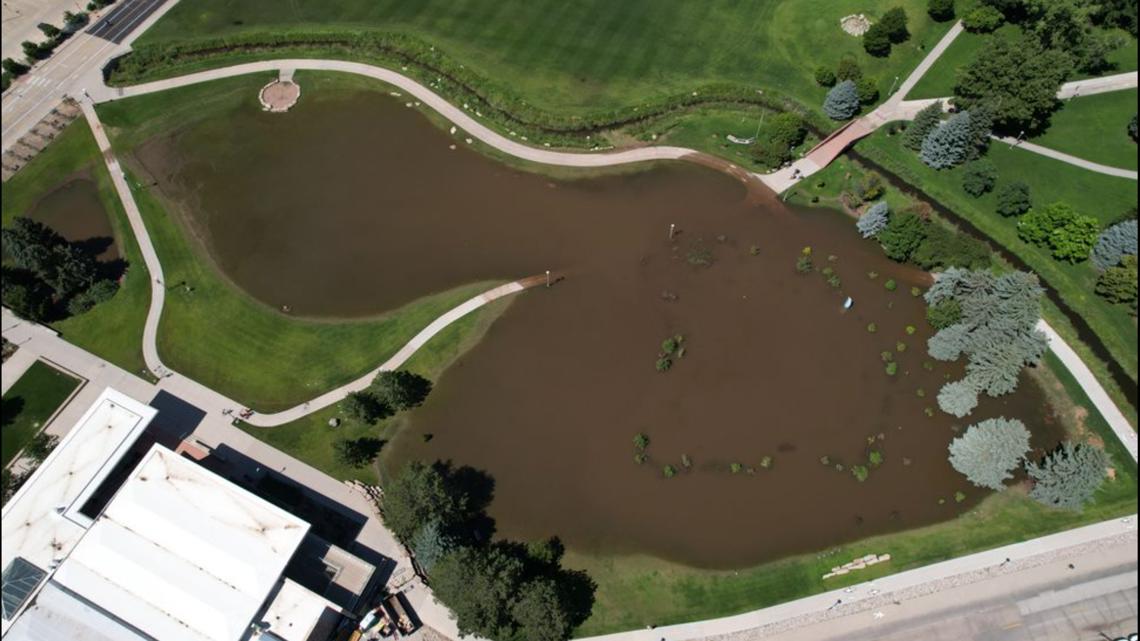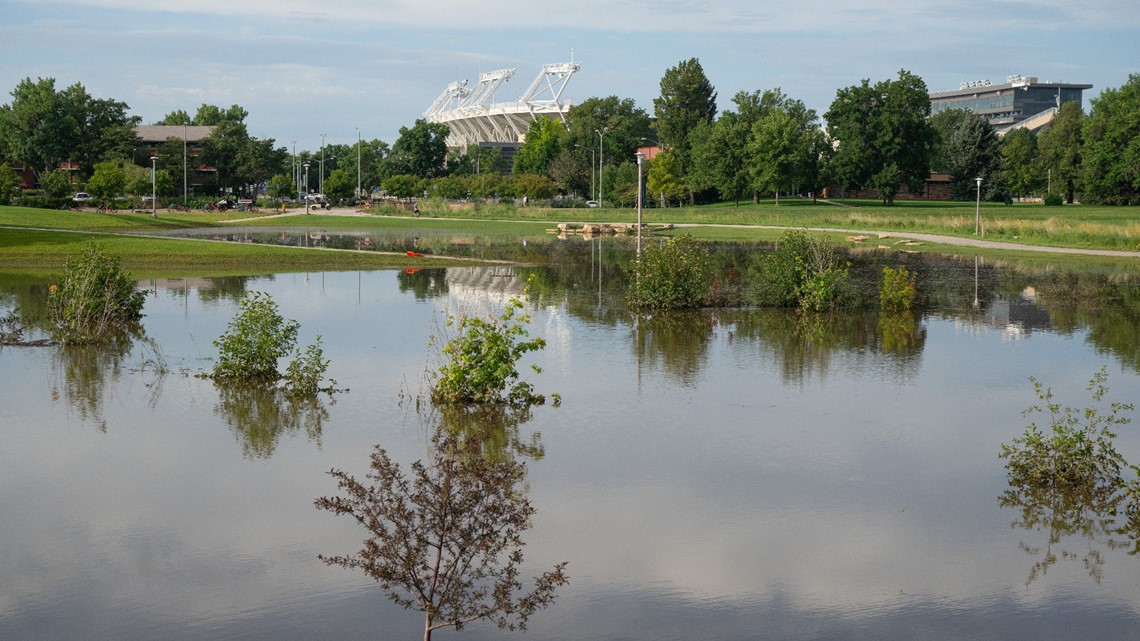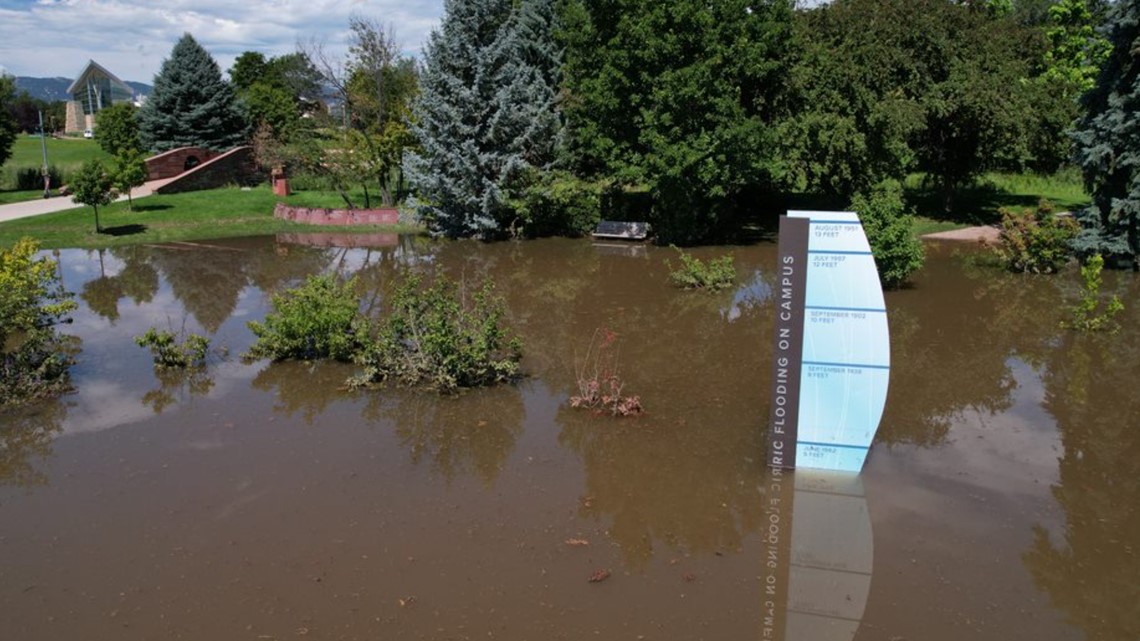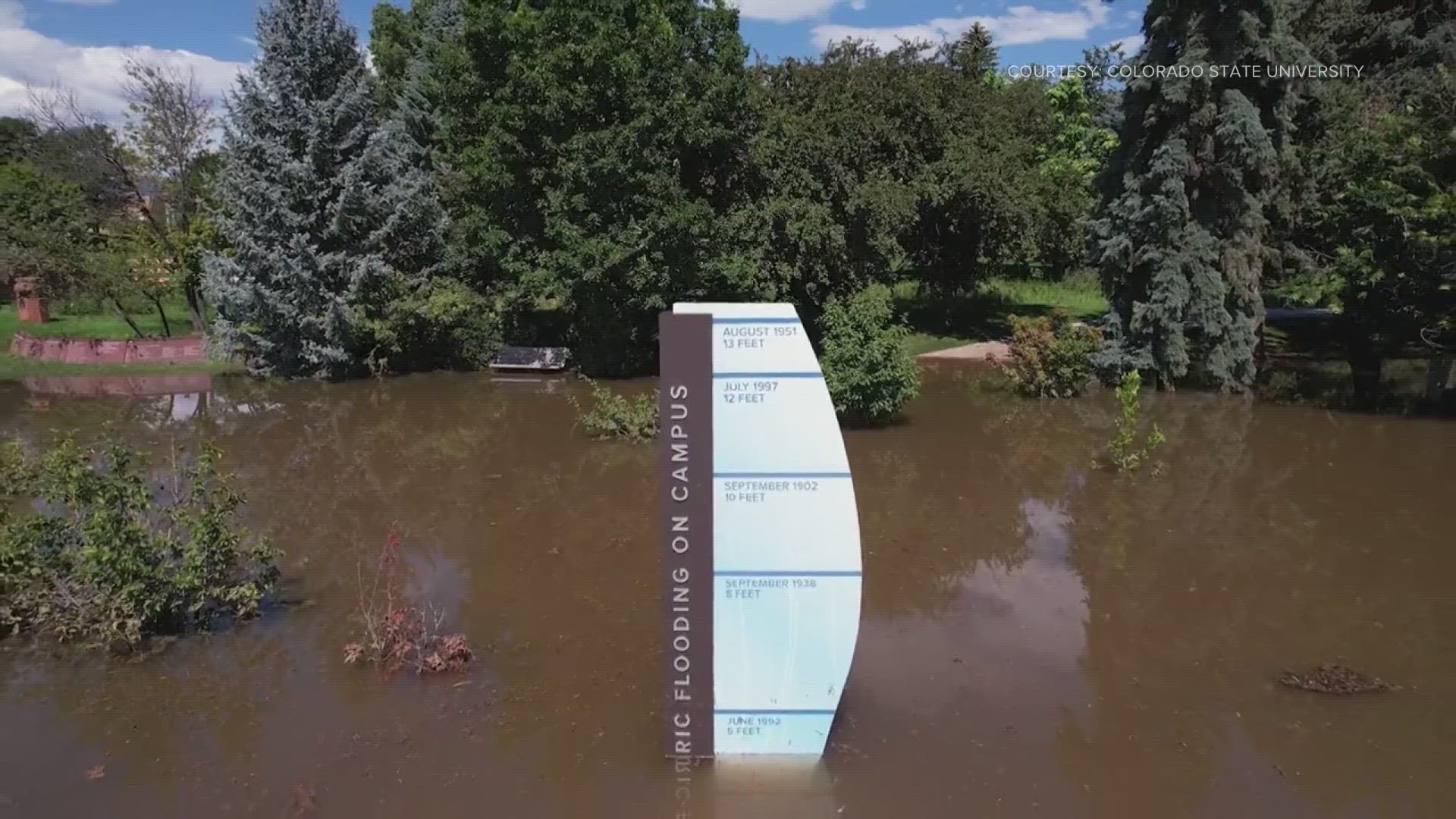FORT COLLINS, Colo. — Fort Collins braces for more storms Wednesday after streets turned into streams from flooding on Monday night. Downtown was a mess and so were parts of Colorado State's campus.
More than three inches of rain came pouring down on Fort Collins in under two hours on Monday, according to Russ Schumacher who is a CSU climatologist.
At least two restaurants on College Avenue were damaged by water.
"We are talking about heavy rain and flooding rather than too many concerns about wildfires," said Schumacher. "To some extent we got used to these drought conditions, right? These really hot, really dry summers but we know historically that summers like this can come around where we can have heavy rainfall."
Like on Monday night when parking lots near the library at CSU transformed into ponds. Half a dozen buildings were impacted by water coming under the doors. Crews at CSU worked to clean up the mess overnight.
Four buildings – Eddy Hall, Rockwell Hall, the Forestry Building and the Morgan Library – were closed for cleanup Tuesday.
Campus officials said the flooding on campus could have been a lot worse if it hadn't been for improvements since the historic flood at CSU that caused more than $150 million in damage in 1997.
The most recent flood mitigation project happened several years ago when the area around the lagoon was deepened to hold more floodwater.
If that area were to fill and overflow during a flood event water would pass through the transit center bus stops and reach the oval between Ammons Hall and the TILT Building, according to campus landscape architect David Handsen. The bike trail near Braiden Hall and Eddy Hall was submerged, according to the university, and there was a brief power outage in some of the residence halls.
Flooding on Monday night was largely contained in the lagoon area.
But CSU said the flooding could have been "a whole lot worse" had it not been for improvements made to the campus since the historic flood of 1997.
According to a release from CSU, a variety of flood mitigation projects have been completed by the university and the City of Fort Collins in the years since the July 28, 1997, flood, when 31 hours of intense rainfall inundated key campus buildings like the Lory Student Center and the Morgan Library. Damage was estimated at more than $150 million.


The projects, which included construction of floodwalls, berms and below-grade systems in 2000 and 2001, cost more than $1 million, the release said.
CSU said the most recent flood mitigation project was completed several years ago, when the area around the lagoon was deepened to hold more floodwater. According to campus landscape architect David Hansen, that project prevented widespread flooding this week.
"The reason the oval didn't flood is because of the deepened lagoon," he said. "It didn't even get to the transit center. The lagoon project proved its worth last night."


Hansen said other flood mitigation projects that CSU completed in the years since the 1997 flood have focused on building protection, including adding berms on the east side of the oval and creating flood protection walls around facilities like the Occupational Therapy Building and Johnson Hall.
“There is a series of steel wall plates that can be set up at a moment’s notice so that we don’t have water going into doorways,” Hansen said.
CSU said flood walls have also been added on the west side of the Morgan Library and around the Eddy Building, as well as new berms around the Lory Student Center. In addition, the city has completed several flood mitigation projects west of the main campus, stretching all the way to Overland Trail. The university said those projects were done in natural areas to slow the flow of water as it reaches campus.


Hansen said that since 1997, any new campus construction that touches the floodplain includes flood mitigation efforts.
“When we do projects on campus, we are constantly remodeling the floodplain,” he said.
More information on flood mitigation at CSU, including animated maps showing the path that floodwater takes on campus, is available on the Facilities Management website. Photos and information on the 1997 flood are available on SOURCE.


While rain this season in and around Denver is breaking records big storms in late summer are not uncommon.
"Big Thompson flood of 1976 was July 31st. Fort Collins flood July 28," said Schumacher. "That moisture will get pushed up into the foothills and the mountains and then the storms will park there for a long period of time."
So much water means little wildfire risk. Scientists said that the rain could stick around east of the divide in Colorado for the rest of the year because of all of this moisture.
"I am a little less concerned about this year as we are going into an El Niño situation," he said.
SUGGESTED VIDEOS: Severe Weather

